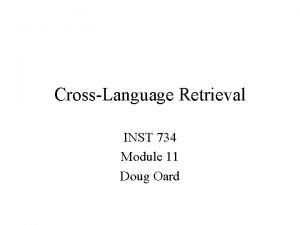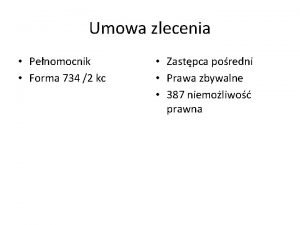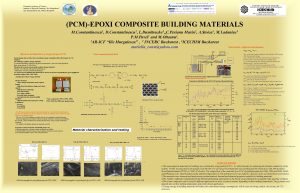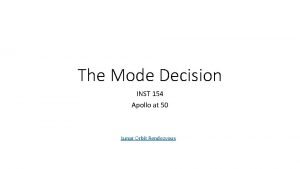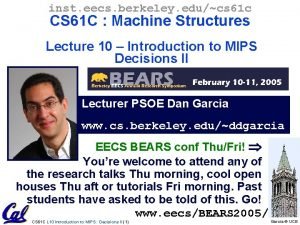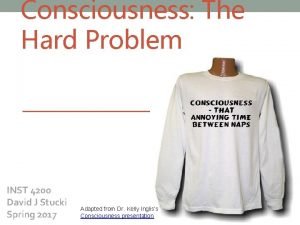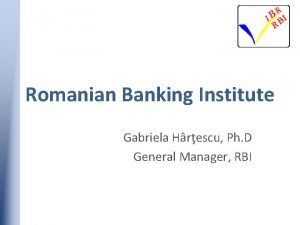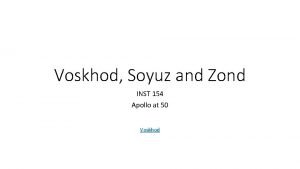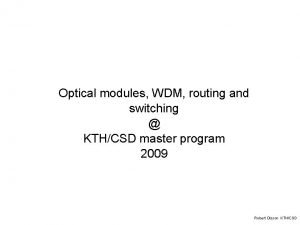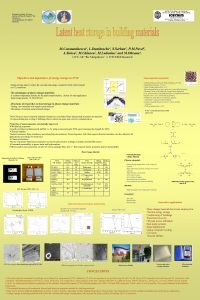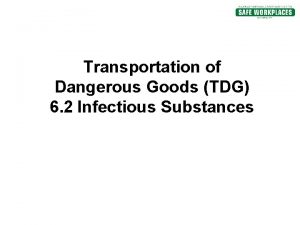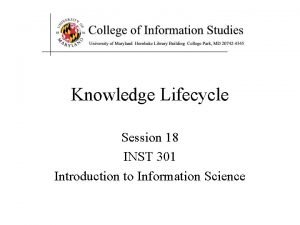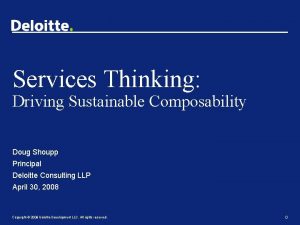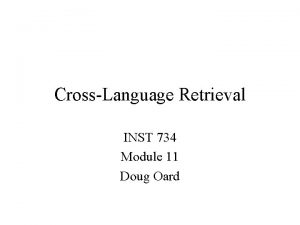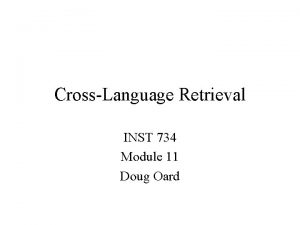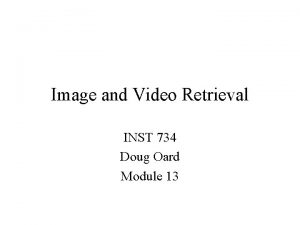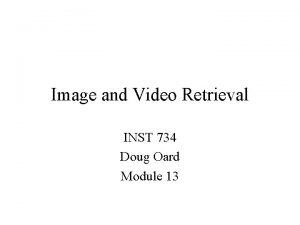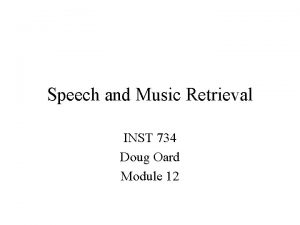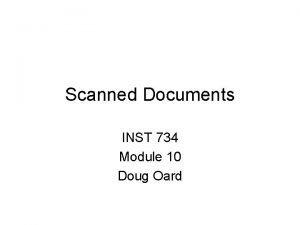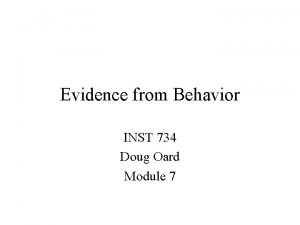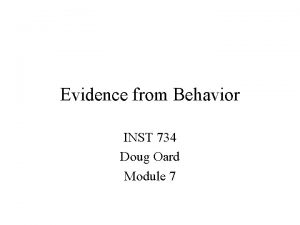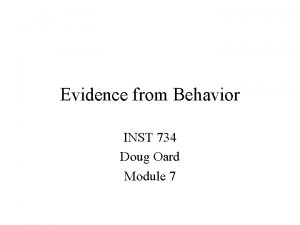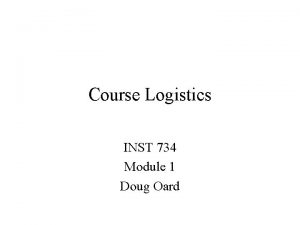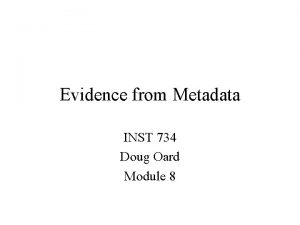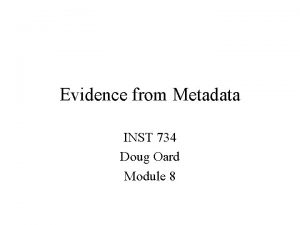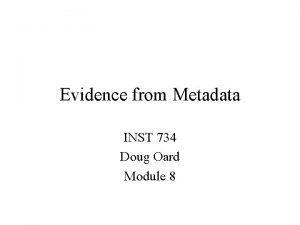CrossLanguage Retrieval INST 734 Module 11 Doug Oard

















- Slides: 17

Cross-Language Retrieval INST 734 Module 11 Doug Oard

Agenda • CLIR • Dictionary-Based CLIR Ø Corpus-Based CLIR • Interactive CLIR

Sources of Translation Knowledge • Lexicons – Phrase books, bilingual dictionaries, … • Similarity – Similar pronunciation • Large text collections (“corpora”) – Translations (“parallel”) – Similar topics (“comparable”) • People

Hieroglyphic Egyptian Demotic Greek

Some Modern Rosetta Stones • News – Hong Kong News (Chinese-English) • Government – Canadian Hansards (French-English) – Europarl (21 EU languages) – UN Treaties (Russian, English, Arabic, …) • Religion – Bible, Koran, Book of Mormon

Word-Level Alignment English Diverging opinions about planned tax reform Unterschiedliche Meinungen zur geplanten Steuerreform German English Madam President , I had asked the administration … Señora Presidenta, había pedido a la administración del Parlamento … Spanish

Statistical Translation Model • Induce translation model – From word-aligned bilingual text – Count the alignments, and smooth where, • Example: p(探测|survey) = 0. 4 p(试探|survey) = 0. 3 p(测量|survey) = 0. 25 p(样品|survey) = 0. 05

Using Multiple Translations • Probabilistic Structured Queries (PSQ) – Multiple translations – Each with an esimates translation probability • TF and DF of query term e are computed using TF and DF of its translations:

Retrieval Effectiveness CLEF French Wang & Oard, Matching Meaning for Cross-Language Information Retrieval, IP&M, 2012

Exploiting Comparable Corpora • Blind relevance feedback – Any CLIR technique + unlinked comparable corpus • Lexicon enrichment – Any lexicon + unlinked comparable corpus • “Dual-space” techniques – Document-linked comparable corpus

Lexicon Enrichment with Comparable Corpora … Cross-Language Evaluation Forum … ? … Solto Extunifoc Tanixul Knadu …

Lexicon Enrichment • Use a bilingual lexicon to align “context regions” – Regions with high coincidence of known translations • Pair unknown terms with unmatched terms – Unknown: language A, not in the lexicon – Unmatched: language B, not covered by translation • Treat the most surprising pairs as new translations

“Interlingual” Retrieval Chinese Query Terms Query Translation English Document Terms Document Translation Interlingual Retrieval 3: 0. 91 4: 0. 57 5: 0. 36

Dual Space Techniques: Learning From Document Pairs English Terms E 1 E 2 E 3 E 4 Spanish Terms E 5 S 1 S 2 S 3 S 4 Doc 1 4 2 2 1 Doc 2 8 4 4 2 Doc 3 2 Doc 4 2 Doc 5 4 2 2 1 1

Generalized Vector Space Model • “Term space” of each language is different – Document links define a common “document space” • Describe documents based on the corpus – Vector of similarities to each corpus document • Compute cosine similarity in document space • Very effective in a within-domain evaluation

Latent Semantic Indexing • Term-based similarity captures noise with signal – Term choice variation, word sense ambiguity • Signal-preserving dimensionality reduction – Conflates terms with similar usage patterns – Reduces term choice effect, even across languages • Computationally expensive

Agenda • CLIR • Dictionary-Based CLIR • Corpus-Based CLIR Ø Interactive CLIR
